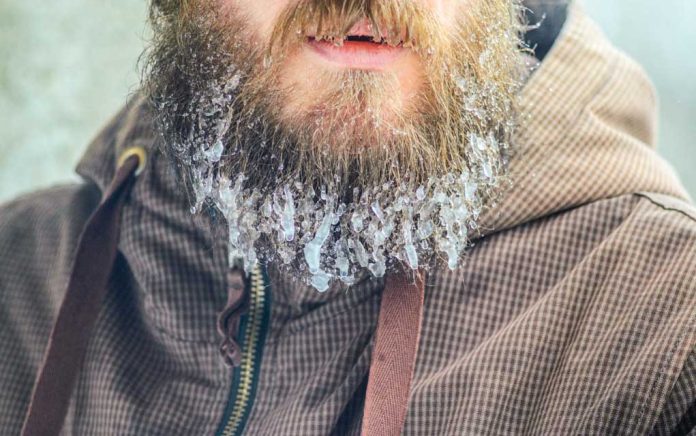(SurvivalDaily.com) – The human body in many ways is a mechanical marvel. Our bodies however are also very fragile and easy to damage. Perhaps one of our biggest weaknesses is our thermoregulation, or our body’s ability to keep its core temperature.
The ideal temperature for the human body is 98.6ºF, although the body can still function normally at temps as low as 97.7ºF to as high as 99.5ºF.
If your body goes lower than this range, you will start to experience hypothermia. This is a medical emergency in which your body is losing more heat than it can produce. If left untreated, it can lead to death.
If your body temp climbs higher than the 99.5ºF mark, you’re likely going to start experiencing hyperthermia where your body is overheating
So how do you know when you’re experiencing these conditions? How do you regulate your temperature to avoid becoming a statistic?
Hypothermia
Hypothermiareally starts around 95 or 96 degrees Fahrenheit, which is when you’ll feel the early symptoms of:
- Shivering
- Decreased alertness
- Unable to think clearly
- Minor loss of function in fingers and toes
- Stinging pain in extremities
- Confusion
This is easily combated by exerting yourself physically. Warming yourself by a fire and adding dry layers to better insulate yourself are also ways to prevent further hypothermia. What happens if your body temperature continues to decrease? Around 93º-94ºF you’ll start to experience advanced hypothermia which includes:
- Uncontrollable shivering
- Lack of stability
- Increased lack of clarity
Get yourself indoors if possible and rub the areas that are cold. If you’re with someone else cuddling, together can help warm both of your bodies up. The body is going to keep the core as warm as possible, so placing your feet and hands in your friend’s armpits or on their stomach will help warm you up.
If this still doesn’t help regulate your core temp you’re going to experience the later and more serious symptoms of hypothermia. This occurs when the body’s temperature drops to 91 or 92 degrees Fahrenheit. At this critical temperature you can expect to experience:
- Gray skin
- Hallucinations
- Increased lack of stability
- Speech affected
- Spasmodic shivering
At this point, you need to do whatever you can to stay warm. Try to move your body to help produce heat, but don’t do it to the point of sweating. Add in external heat, such as a fire, and consume warm liquids if possible. If you can’t do these things your core temperature will drop down to the deadly temps of 87º-90ºF and you can expect to experience:
- Inability to walk
- Incoherent speech
- Shivering decreased
At these temperatures, just like any other extremes, you’re going to need medical attention. If you can’t get medical attention, then death is not far away.
Hyperthermia
Just as you can die from your body becoming too cold, you can also die from the opposite. Overheating is easier than people think, but it’s also easy to avoid.
Hyperthermia is different from a fever. Fever occurs as part of the immune system’s reaction to a pathogen. Hyperthermia can occur quickly and get out of hand just as fast, with early signs of it occurring at 99 to 100 degrees Fahrenheit. You can expect to experience the early symptoms of:
- Nausea
- Dizziness
- Headache
- Thirst
- Lack of appetite
- Muscle spasms
- Feeling weak
- Profuse sweating
These early symptoms can be a result of exertion on a hot day, but can be caused by underlying sources of heat. To avoid furthering hyperthermia you need to remove the underlying source of heat. Or, if it comes from exertion on a hot day, find a shaded area and rest. Remember to drink plenty of fluids.
If you fail to recognize the early signs of hyperthermia your body temp will continue to rise eventually getting to the 101º-102ºF mark. Once your body reaches these temperatures, you can expect to experience:
- Headache
- Profuse sweating
- Thirst
- Disorientation
- Cramps
- Pale moist skin
- Possible unconsciousness
- Weak
- Rapid pulse and/or breathing
- Lack of appetite
- Nausea and/or vomiting
At this stage, it’s going to take a little more than rest in a cool shaded area. Additional water consumption is mandatory. In addition, a nice cold water bath could help. Remove some clothing to allow your sweat to evaporate.
If your body’s temperature continues to increase and get to the deadly temperatures of 103º-106º you’re going to need medical attention. Once your body has hit this point symptoms include:
- Disorientation
- Delirium
- Unresponsive
- Skin hot to the touch and can be dry
- Shallow breathing
- Dilated pupils
- Seizures
- Stroke
- Coma
This is a critical temperature for your body. You need to cool the body down any way you can and as fast as you can. Iced IVs are a common solution, but they may not be available depending on your situation.
Ways to Regulate Body Temp
There are obvious ways to maintain an ideal core temperature. Having shelter, dressing in layers, and fire are all good ways to stay warm in extreme cold. Avoid getting wet, this includes sweating, as the moisture will only make you colder. Drinking warm liquids helps too, be sure they’re not too hot.
In extreme heat, you can find ways to regulate your temperature by finding shelter, dressing in light colors, staying hydrated, and limiting physical exertion. Wearing loose-fitting breathable clothes as well as avoiding spicy foods and caffeine. Alcohol isn’t going to help, so pass the cold beer up too.
Hypothermia vs Hyperthermia
In 2015, the number of hypothermia related deaths was just over 800 for the year. The number of deaths due to hyperthermia is harder to distinguish due to hyperthermia being an umbrella term for multiple heat-related issues. Although it is very possible to die from excessive heat, you’re more likely going to die from extreme cold. But still, there were just under 400 deaths by extreme heat in 2015.
In Conclusion
The best way to avoid both of these is to be prepared for whatever environment you’re going to be in. Bring extra clothes and blankets and external heat sources if possible for cold weather conditions. It is easier to prepare for a hot climate, but you can try to bring a source of shade, like an umbrella.
Water is essential for both situations, so always have enough water if not extra. Limit your physical exertion in both climates, to avoid overheating. It sounds crazy to say avoid overheating in extreme cold, but you don’t want to sweat. Always have an emergency plan based on where you’re going.
~Copyright 2021, SurvivalDaily.com

















